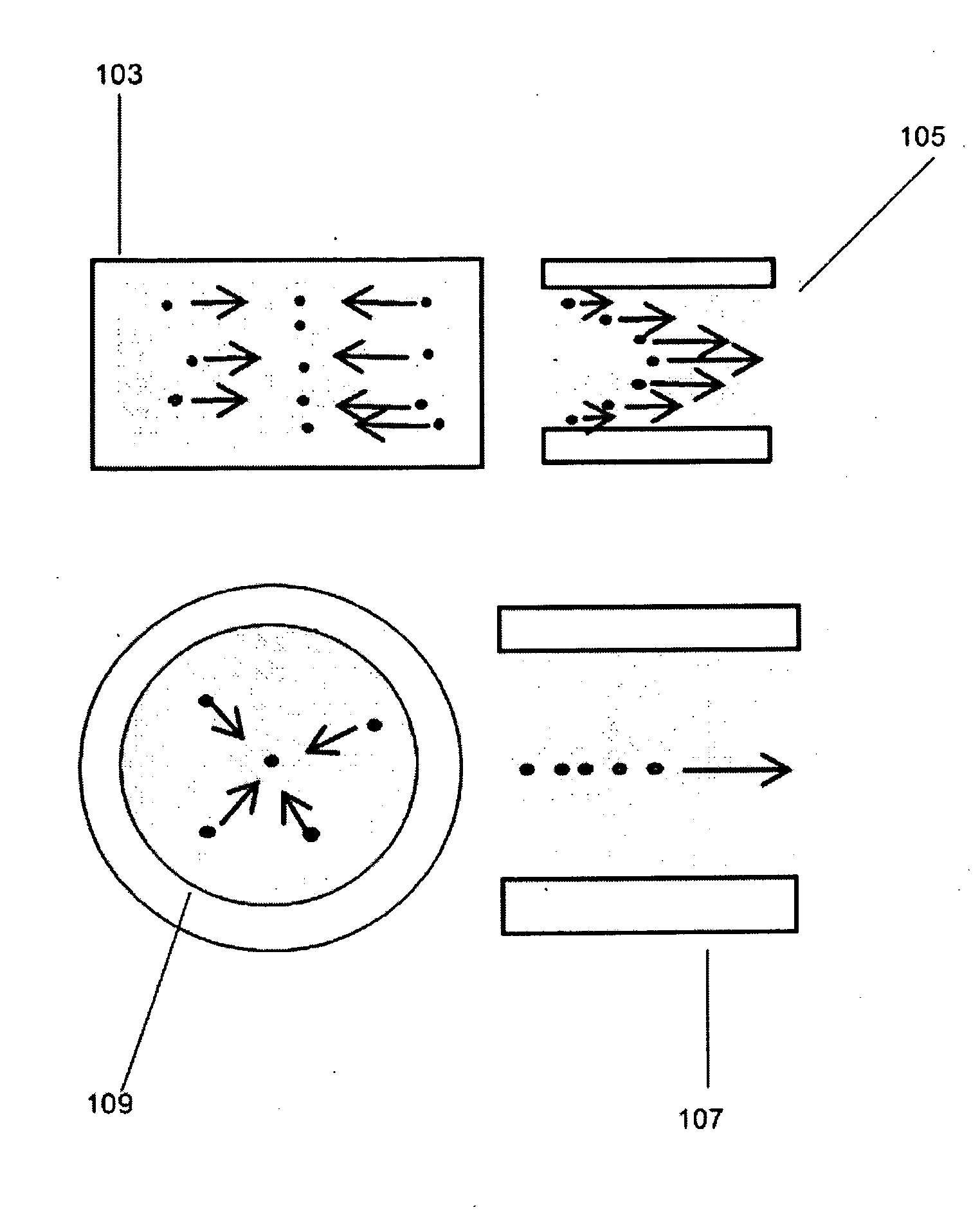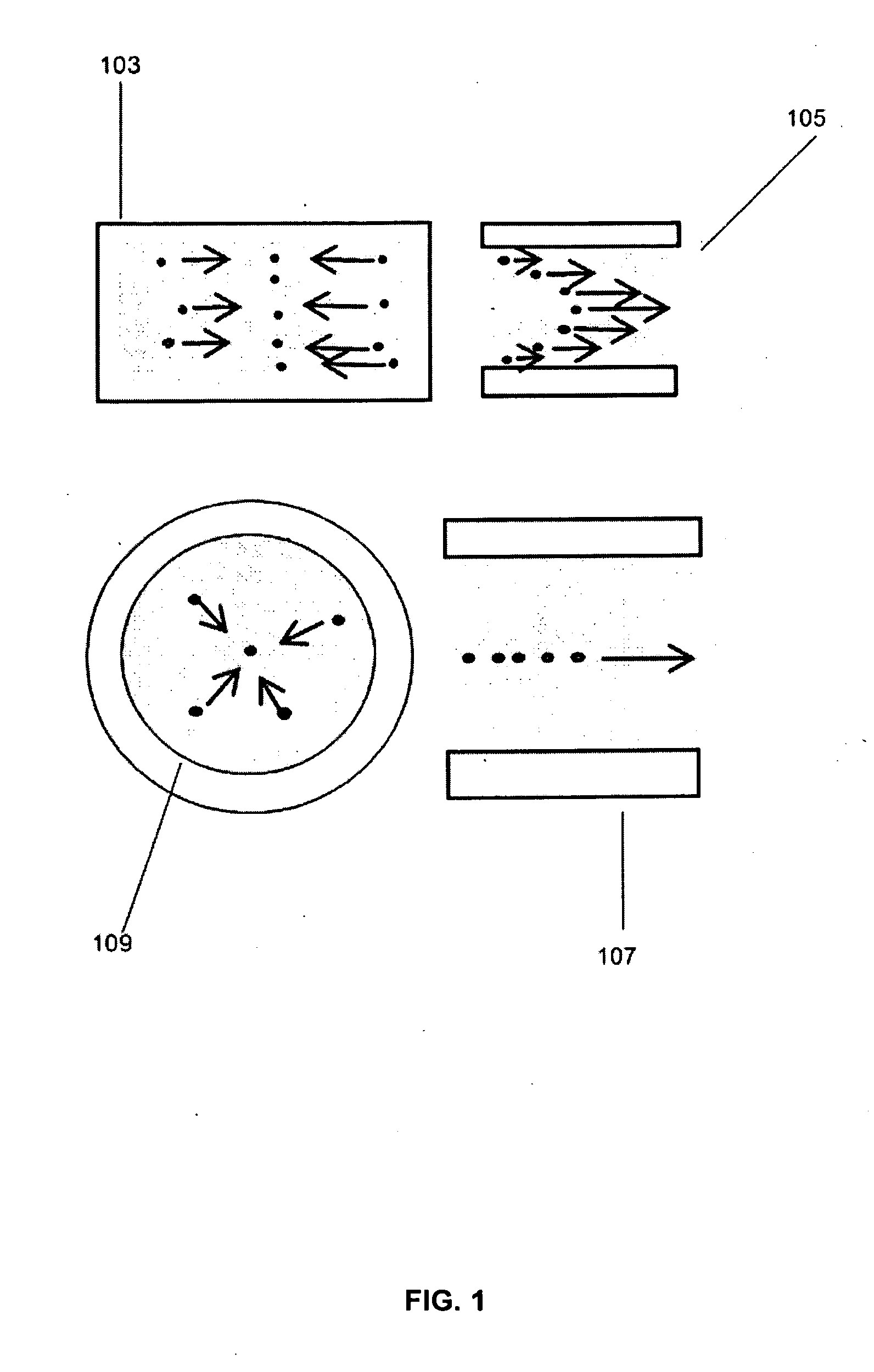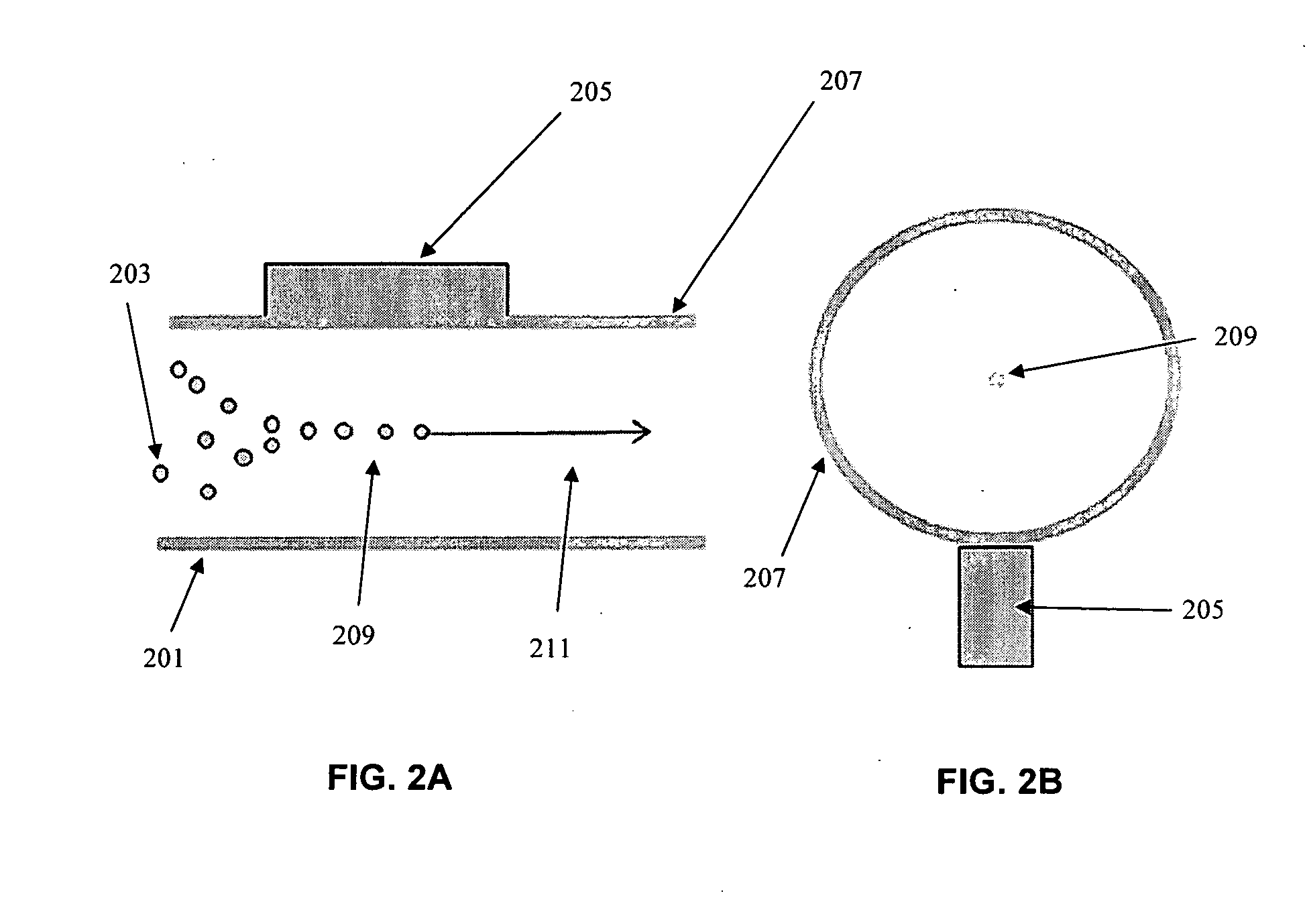Particle Analyzing Systems and Methods Using Acoustic Radiation Pressure
a particle analysis and acoustic radiation technology, applied in the field of systems using acoustic radiation pressure, can solve the problems of particle not being able to be held at the interrogation point for a user defined period of time, particle spending a very limited time in the excitation spot, particle cannot be redirected to the interrogation point, etc., to achieve the effect of short lifetime and long lifetim
- Summary
- Abstract
- Description
- Claims
- Application Information
AI Technical Summary
Benefits of technology
Problems solved by technology
Method used
Image
Examples
example 2
[0238]Acoustic washing of the sample can eliminate most or nearly all centrifugation steps in flow assaying (or other types of assaying that would benefit from sample washing prior to analysis). This not only saves tremendous amounts of technician time, but it also automates a tedious process that is prone to operator error particularly due to fatigue. It also reduces exposure of operator to potentially bio-hazardous materials.
[0239]Adjustable Concentrator / Washer
[0240]Acoustic concentration and washing can replace centrifugation operations for many assaying methods. It has many advantages including extremely clean and gentle separation and reduced operator variation. In addition it presents new opportunities for sample processing that cannot be achieved in conventional centrifugation. By adjusting the concentration ratios used in an acoustic washer, one can chose the output concentration of a sample. If for example, the sample's initial concentration is 105 particles per milliliter ...
example 3
[0254]In-Line Red Cell / Cell Lysis
[0255]By incorporating a rapid red cell lysis reagent into the central wash stream, it is possible to lyse red cells in-line in a flowing separator. After lysis, the unlysed white cells can be quickly transferred to a quenching buffer in a subsequent separator. This operation can be performed in seconds, minimizing damage or loss of white cells. The second operation can also be used to exclude debris including lysed red cell “ghosts” that have decreased acoustic contrast resulting from the lysis process.
[0256]Concentration of Analytes / White Cells to Decrease Labels or Time
[0257]Often, staining of white blood cells for immunophenotyping is done in a small volume of blood prior to lysis. Alternatively, staining can be done after lysis but the sample volume and number of white cells must be carefully controlled in order to insure the proper immune-reaction. The acoustic wash system can be used to concentrate target cells or particles to a small volume f...
example 4
[0261]Urinalysis
[0262]Analysis of particles / cells in urine is a very common test used to screen and diagnose many conditions including urinary tract infections and urinary system cancers. Most commonly, particles / cells in urine are centrifuged to concentrate them and then they are examined using a microscope slide. This is time consuming, labor intensive and subject to operator error as well as error from the effects urine can have on cellular constituents.
[0263]Urine is a destructive environment for cells as it can have non-physiological osmotic pressures and pH as well as toxic metabolites. These conditions dictate a minimal post-collection delay for examination to avoid excessive degradation of cellular targets. This exposure can be minimized in an acoustic washing system by transferring the urine sample cells and particulates immediately into a cell friendly wash solution. The concentrating effect of the system is particularly well suited to urine processing where the cells and ...
PUM
| Property | Measurement | Unit |
|---|---|---|
| core diameter | aaaaa | aaaaa |
| time | aaaaa | aaaaa |
| concentration | aaaaa | aaaaa |
Abstract
Description
Claims
Application Information
 Login to View More
Login to View More - R&D
- Intellectual Property
- Life Sciences
- Materials
- Tech Scout
- Unparalleled Data Quality
- Higher Quality Content
- 60% Fewer Hallucinations
Browse by: Latest US Patents, China's latest patents, Technical Efficacy Thesaurus, Application Domain, Technology Topic, Popular Technical Reports.
© 2025 PatSnap. All rights reserved.Legal|Privacy policy|Modern Slavery Act Transparency Statement|Sitemap|About US| Contact US: help@patsnap.com



